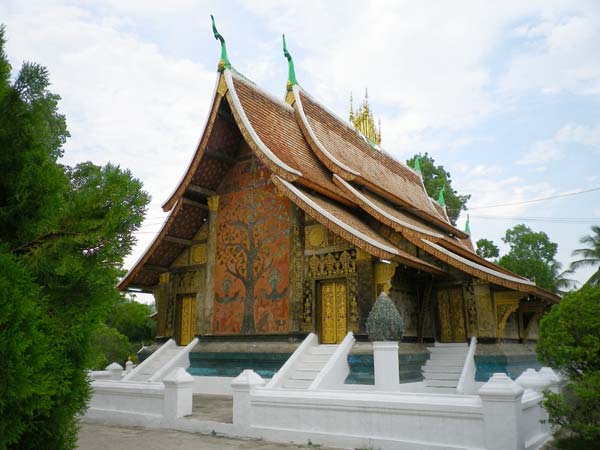
Built in 1560, Vat Xieng Thong contains some 20 structures where successive kings were once crowned. Photo by Rebecca Lo / For China Daily
|
The ancient capital of Laos offers small-town charm with the soul of Buddhism prevalent in every aspect of life. Rebecca Lo soaks it all in.
For as long as I can remember, the sight of closely shaved heads and mustard-colored robes were as familiar as my favorite toy.
My mother taught in a Buddhist school in the New Territories of Hong Kong and my father is a devout follower of Buddhism, often going away on retreats or inviting Buddhist nuns and monks to drop by for tea and philosophical conversations.
The life of an "outside-the-family" person, as we called these folks who have renounced blood ties to seek a higher purpose, was supposed to be one of frugal meekness. Yet more and more, I notice that they sport designer-brand watches and frequent Michelin-starred restaurants.
It was all the more refreshing, then, to engage in some back-to-basics Buddhism during a trip to Luang Prabang.
The former capital of ancient Laos is known for preserving an unbroken way of life for centuries. And that includes worshipping in more Buddhist temples - known as vats - per square kilometer than any other place on the planet.
Kevin O'Hagan, the former general manager at Hotel de la Paix, where we were staying, graciously set up a unique Luang Prabang activity for us. For centuries at daybreak, the town's hundreds of monks proceed along central Sakkaline Road as residents bestow alms to the supplicants.
